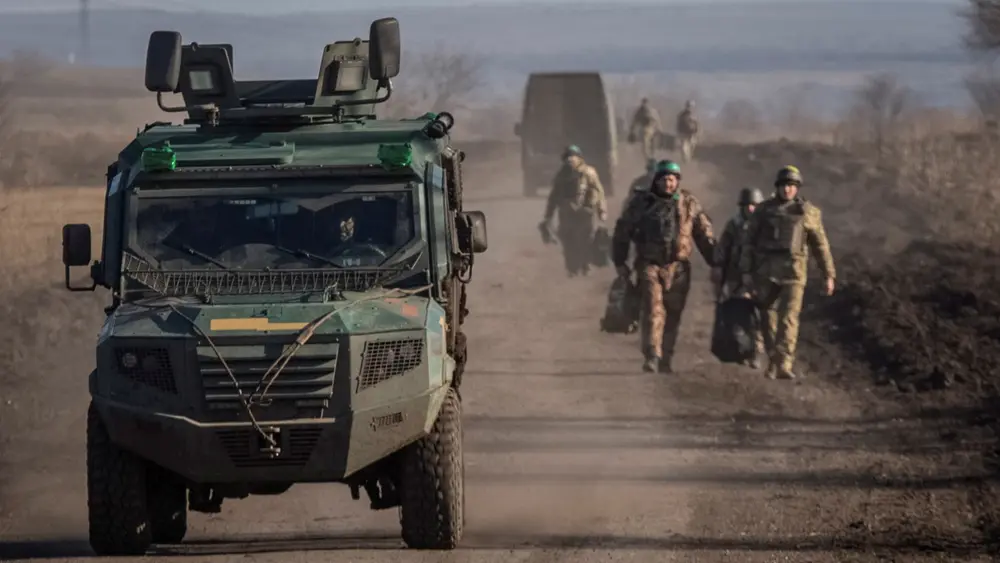Over the past two years, the world has witnessed violent and prolonged conflicts that, despite their initial intensity and the massive resources involved, have reached a point of stagnation. Two of the most glaring examples are the war between Russia and Ukraine, and the conflict in Gaza. These situations, although different in nature and context, share a common element: both seem to have transformed into chronic wars, with no clear prospects for immediate resolution.
Ukraine: From Blitzkrieg to Stalemate
When Russia invaded Ukraine in February 2022, many experts and observers believed that Russian forces would quickly capture Kyiv and force a pro-Russian government to take control. Moscow’s plan seemed simple: a swift military campaign followed by a rapid political victory. However, what initially appeared to be a “walk in the park” quickly turned into a war of attrition.
Today, more than two years since the conflict began, the situation remains tense but without significant progress. The eastern front of Ukraine is a frozen battlefield where neither side manages to achieve a decisive victory. The Ukrainian army, with the support of Western allies, has succeeded in halting the Russian advance and even reclaiming some territories, but without being able to completely repel the invasion. On the other hand, Russia seems stuck in a conflict it did not anticipate, one where economic sanctions, human losses, and international pressures are increasingly taking their toll.
This situation has led to a chronicization of the conflict. Both sides appear unable to find a clear military solution, and political negotiations are either absent or lack substance. The war in Ukraine has become a war of attrition, one in which neither side seems to hold the decisive initiative.
Gaza: A Never-Ending Crisis?
In Gaza, the conflict between Israel and Hamas has dramatically intensified over the past year. Israel, a vastly superior military power, has engaged in a campaign to destroy Hamas’s infrastructure and to rescue hostages captured in the October 2023 terrorist attack. However, despite intense bombings and ground operations, the results remain far from what was anticipated.
One of the most disturbing aspects of this conflict is the fact that military objectives seem to be subordinated to internal political considerations. For Prime Minister Benjamin Netanyahu, the conflict in Gaza has become less about rescuing hostages and more about his own political survival. Israel’s military actions, though devastating for Gaza, have not succeeded in eliminating the Hamas threat or restoring a lasting security climate.
Like the conflict in Ukraine, the crisis in Gaza is becoming chronic. The world is witnessing an endless cycle of violence, where no viable diplomatic solution is in sight, and the victims are primarily civilians on both sides. Instead of clear military victories, what we see is a constant escalation, with devastating long-term consequences.
Even though it seems the conflict is escalating with the involvement of Iran and its armed wing, Hezbollah, there are no decisive moves from either side. It appears we are witnessing a continuous war of harassment rather than a conflict in which either side desires victory “at any cost.”
From Checkmate to Stalemate
What unites these two conflicts is the inability of the involved parties to achieve a decisive victory. In Ukraine, Russia’s hopes of rapidly dominating the country have proven illusory, and in Gaza, Israel’s military might has not succeeded in eliminating the Hamas threat, leaving the conflict to drag on indefinitely.
These conflicts, initially seen as opportunities to assert military power, have turned into traps of attrition. The political leaders who initiated these actions now face their own limitations and the internal and international pressures, trying to save face and find solutions that, at least for the moment, seem impossible.
Thus, the world remains witness to two conflicts that, although very different in nature, share the same fate: stagnation and chronicization, with enormous suffering for those involved and no clear prospects for peace. Under these circumstances, the only certainty seems to be the continuation of these conflicts, in a world increasingly accustomed to endless war.
Top of Form
Bottom of Form
Source link
